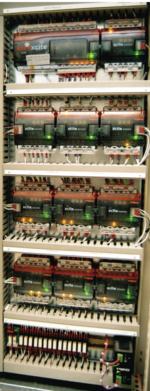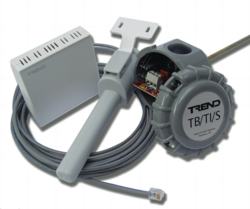Cutting costs, not corners

The higher price of taking out functions — Andy Thorn.
It is an oft-repeated accusation that building management systems are generally over-specified and unnecessarily complex. In reality, the opposite tends to be the case. In an effort to make cost savings, system specifications are all too frequently pared down and important functionality lost. But as ANDY THORN explains, installation costs can be cut without cutting corners.Of the total cost of a building-management system, the control equipment itself (including valves and actuators) accounts for around 15% and the manufacture of the control panels just over 10%. Some 25% goes on system engineering and commissioning — plus project management. Electrical installation represents almost 50%. As with other forms of electronic technology, the cost of BMS controllers has gradually fallen, and there has also been downward price pressure on peripherals such as sensors, valves and actuators. Changes to the design of these different items of hardware have also had an effect on wider system costs. For example, the development of controllers with modular input/output units makes it possible to put more i/o into a given space, thus allowing the panels to be smaller. As well as reducing panel manufacturing costs, this can help solve the increasingly common problem of building designers allowing less and less space for plant rooms. The use of controllers with Ethernet TCP/IP connectivity can potentially have a much greater impact on overall costs. While there is some debate whether Ethernet is any cheaper than putting in a proprietary network (though it probably is), Ethernet opens up the possibility of the BMS sharing a building’s IT infrastructure. This can mean substantial savings on electrical installation. Admittedly, in new buildings it is rare for the controls contractor to find an IT network in place when fitting the BMS. However, with Ethernet increasingly being used by fire, security and other building systems, there is growing pressure on developers to ensure a common infrastructure. If the BMS is being retrofitted — and currently some 70% of systems are retrofits — there is almost always an IT network to piggy back onto.

The development of BMS controllers with modular input/output units has made it possible to put more i/o into a given space — reducing panel size.
Less wire and wireless Field wiring (wiring from the controllers to the sensors and plant actuators) accounts for an appreciable slice of electrical-installation costs. Judicious design of system architecture will often allow this cost to be reduced. For instance, if a building has a large number of roof air-handling units, it would probably make sense to equip each with its own, small, dedicated controller local to the plant (say in a panel built into it) rather than have a few large outstations, each controlling several AHUs. As well as reducing wiring costs, this approach is also likely to simplify maintenance. Owing to the advent of low-cost radio-based temperature sensors, some field wiring can be eliminated. On most applications, the installed cost of wireless sensors is significantly lower than fitting hard-wired sensors. Even if only four sensors are required, there is still a 30% price advantage. For 32, it can work out at over 60%. Wireless technology is also being used to speed system commissioning. A hand-held display has been developed that can communicate via Bluetooth, obviating the need for it to be plugged into a BMS controller. The time taken for an engineer to check sensors, valves etc. is thus greatly reduced. Those responsible for specifying building controls should also bear in mind that some can be easier to install than others. For example, a VAV terminal unit controller with an integral differential-pressure transducer and damper actuator simply has to be clamped to its VAV damper drive shaft. Fitting controls without these features is likely to be far more involved — which will inevitably mean higher labour costs.

The installed cost of radio-based temperature sensors can be significantly lower than that of hard-wired devices.
Engineering savings The latest software for programming BMS controllers allows further savings to be made. Once a tortuous, error-prone and hugely time-consuming process, system engineering was transformed by the introduction of graphical configuration tools. The subsequent upgrading and refinement of these tools has made it simpler still. With the very latest tools, it is possible to create control strategy simply by selecting ‘blocks’ from a library of routines and linking them. As well as saving time, the engineer doing the job requires less training. Another very valuable new feature is the facility to test the strategy in a virtual environment, allowing bugs to be removed before the controllers are shipped to site. Unfortunately, one of the most common ways of effecting savings involves stripping items out of the original control specification. True, capital costs can be cut to some extent by taking out functions like variable-speed control of fans and/or pumps or full zone control of heating and cooling. However, there is ultimately a much higher price to pay, which is of, course, borne by the building user – largely in the form of greatly increased energy bills.
Andy Thorn is UK commercial manager with Trend Control Systems Ltd, PO Box 34, Horsham, West Sussex RH12 2YF.
Related links:











